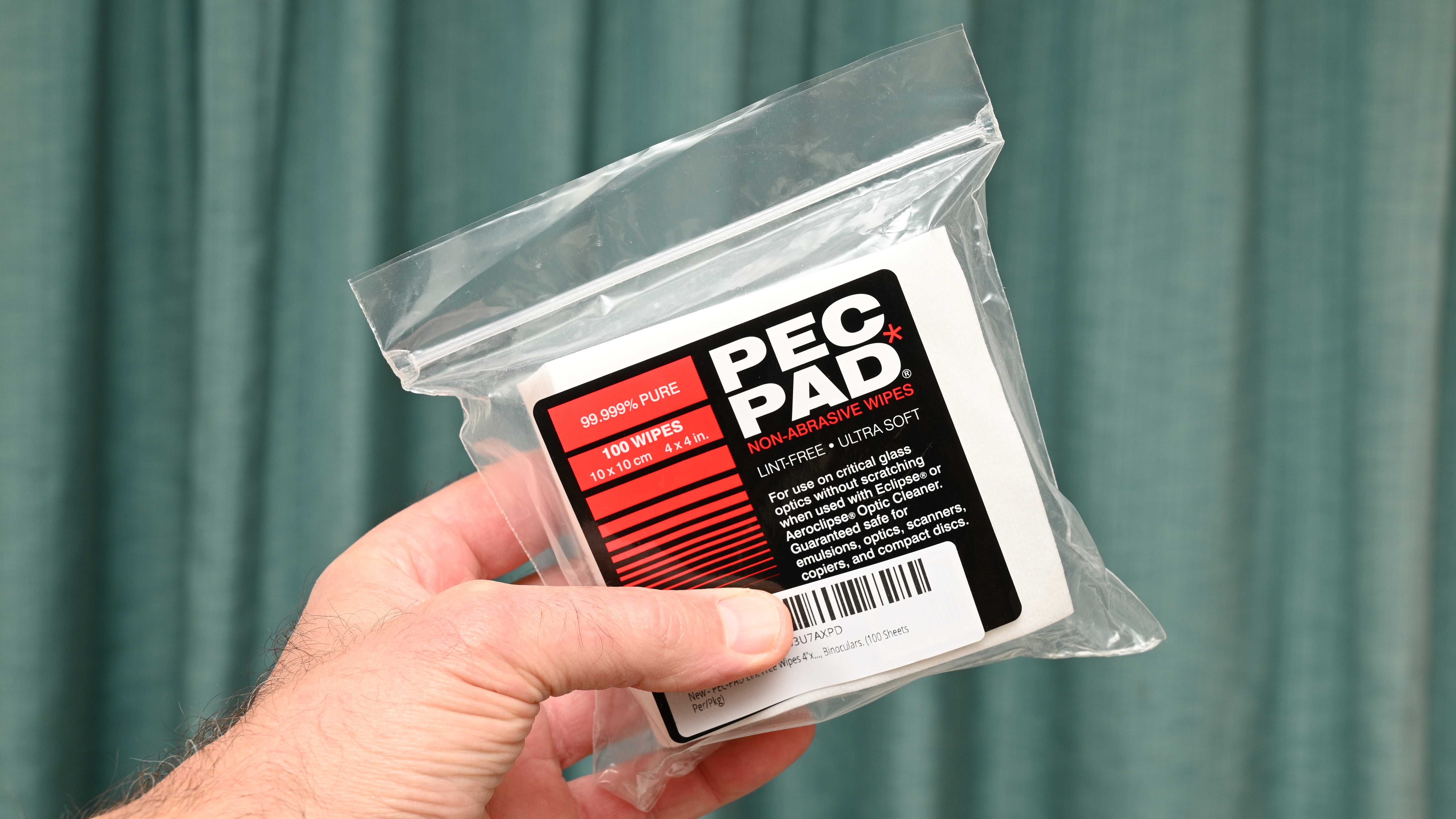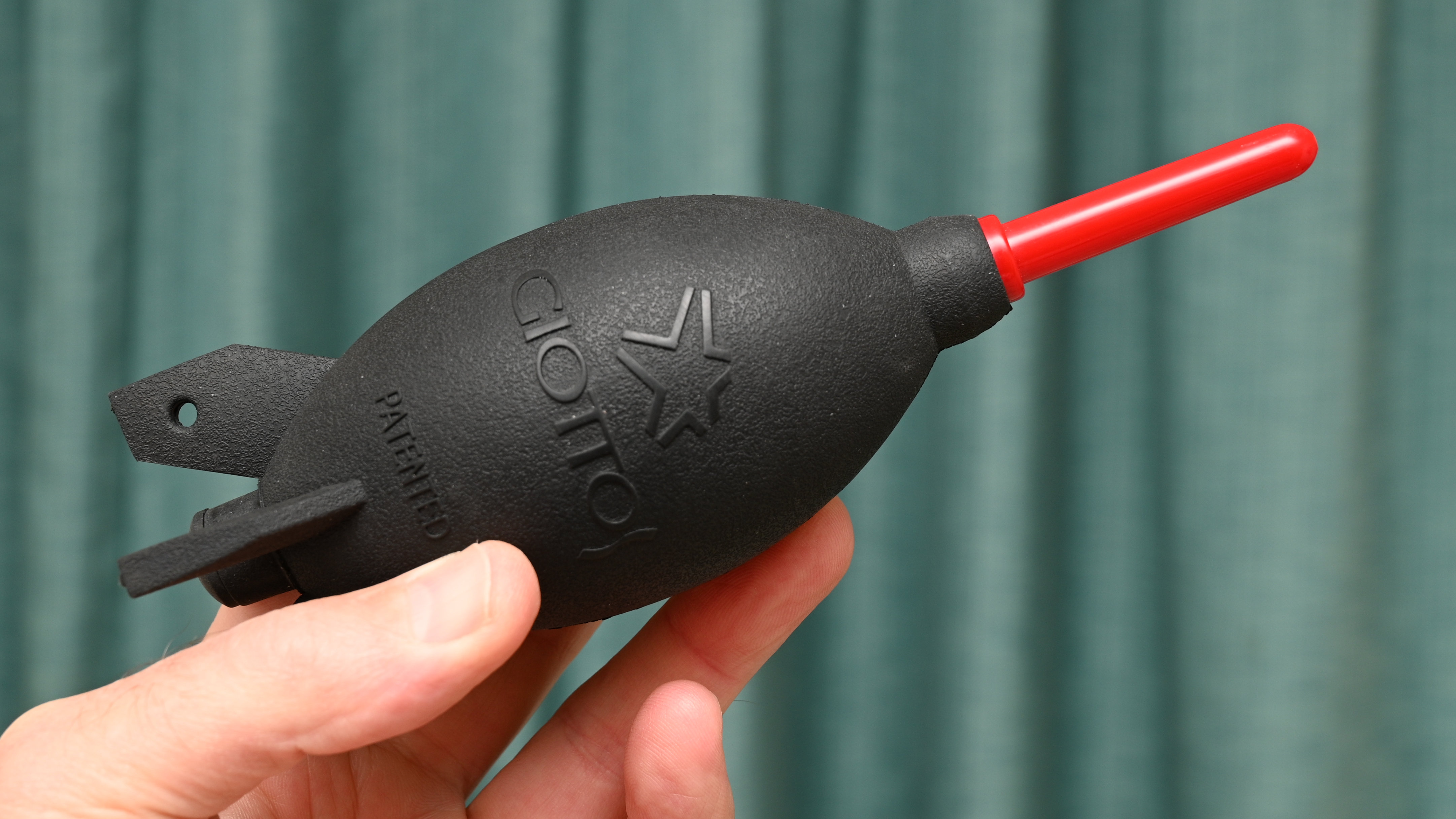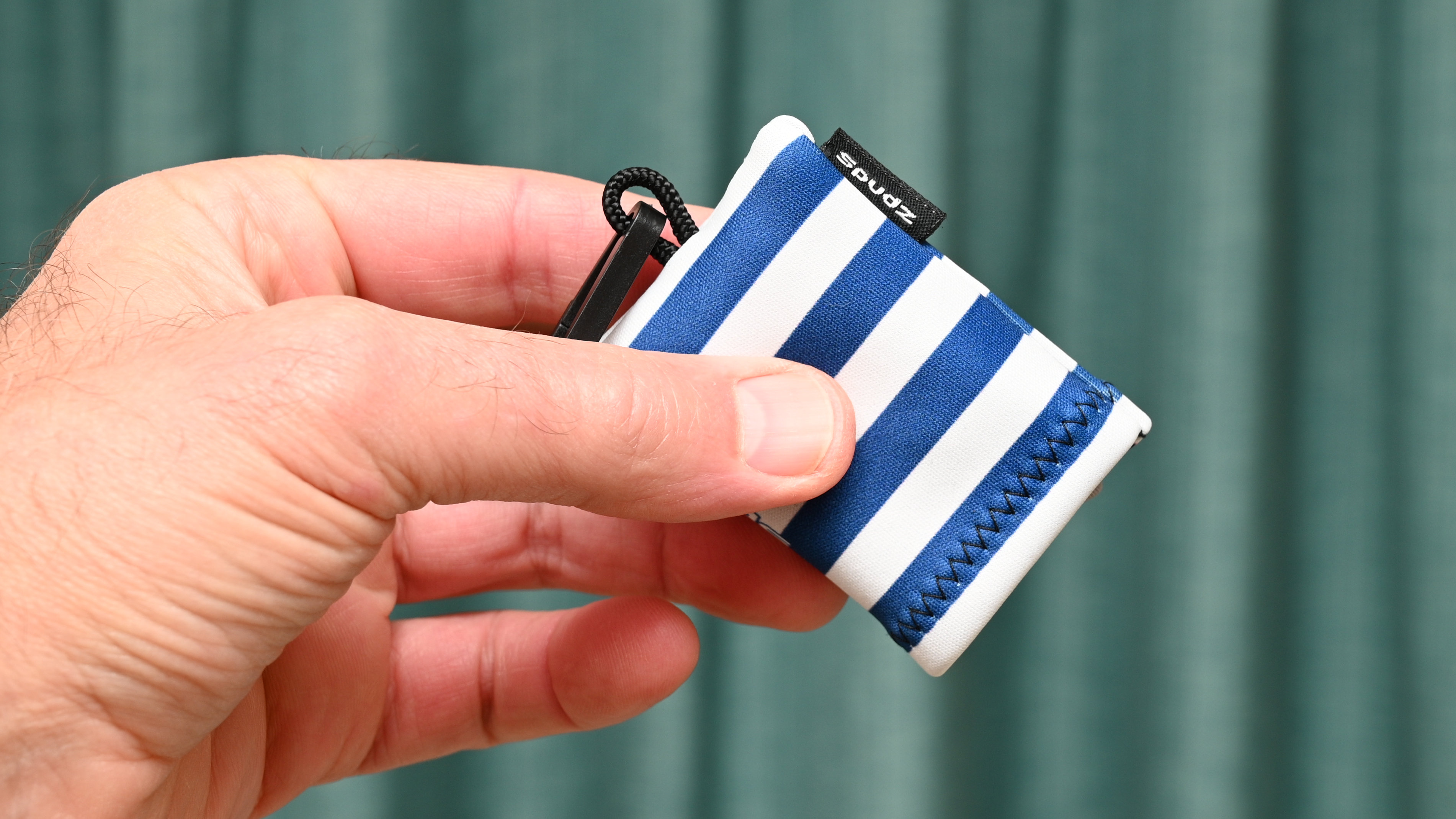The best camera lens cleaners in 2025: keep your lenses bright and clear
Dirty, smeared lenses will ruin your photographs. So keep them spotless with the best camera lens cleaners
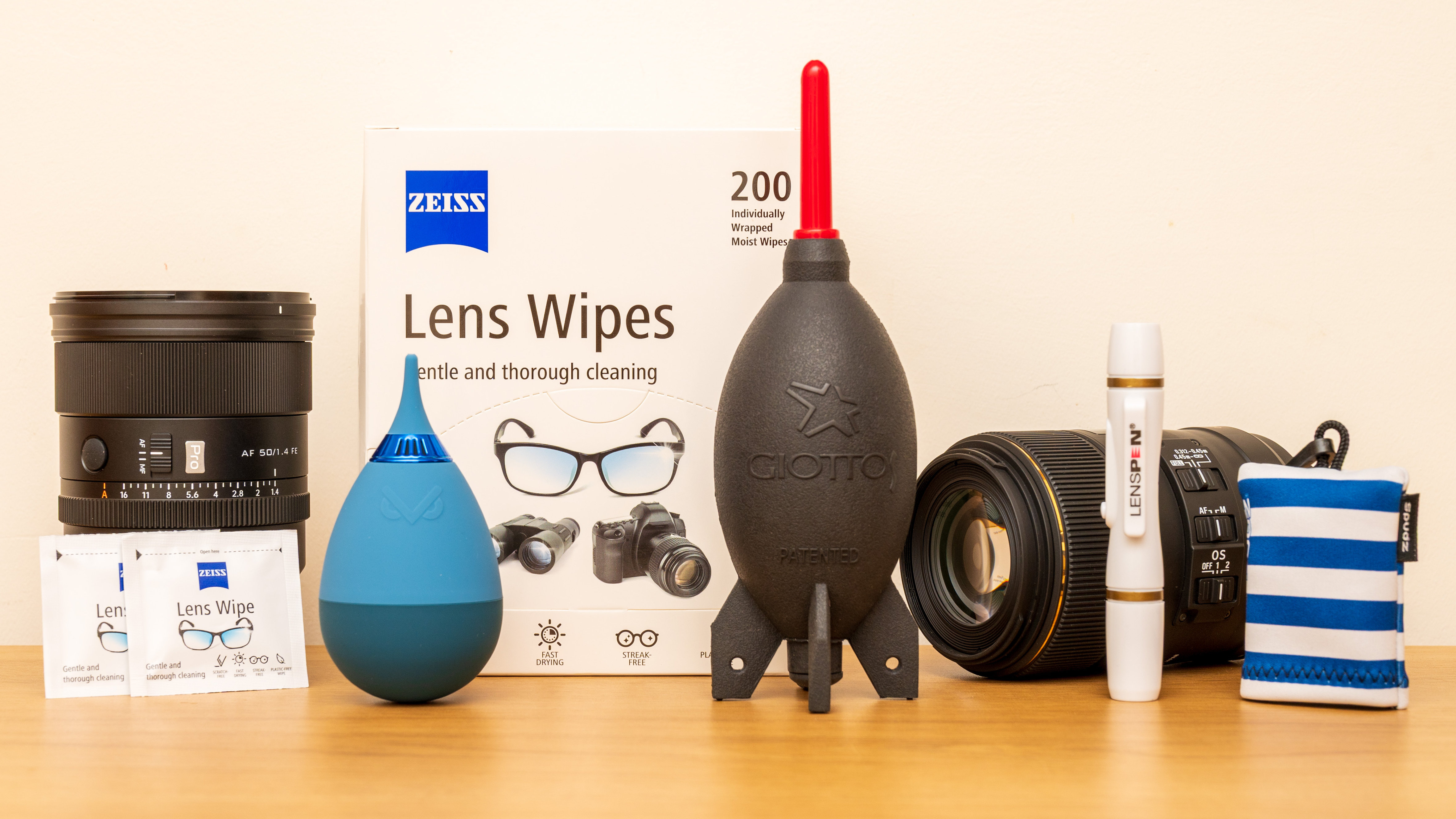
Dirty lenses can wreak havoc on image quality. Dust, grime, and fingerprints dull sharpness, clarity, and contrast, and can even cause flare or ghosting – basically, dirty lenses can ruin your photos. Forget the old habit of breathing on the glass and wiping it with a shirt; today’s lenses have delicate coatings that deserve better care.
Cleaning is rarely a one-step job. If there’s grit or sand, don’t rub it – use a blower or a very soft brush first, holding the lens facing downward so debris falls away. Avoid canned air, as the pressure can force particles or moisture inside the lens.
Once the loose dirt is gone, you might still have smears from fingerprints or general grime. Even lenses with grease-repelling fluorine coatings need proper cleaning. Pre-moistened lens wipes are safe for coated lenses and also work well on rear screens and filters. And if your lens is just fogged with condensation, a dry microfiber cloth may be all you need. Here are my top lens cleaner picks – mix and match to suit your kit.
The Quick List
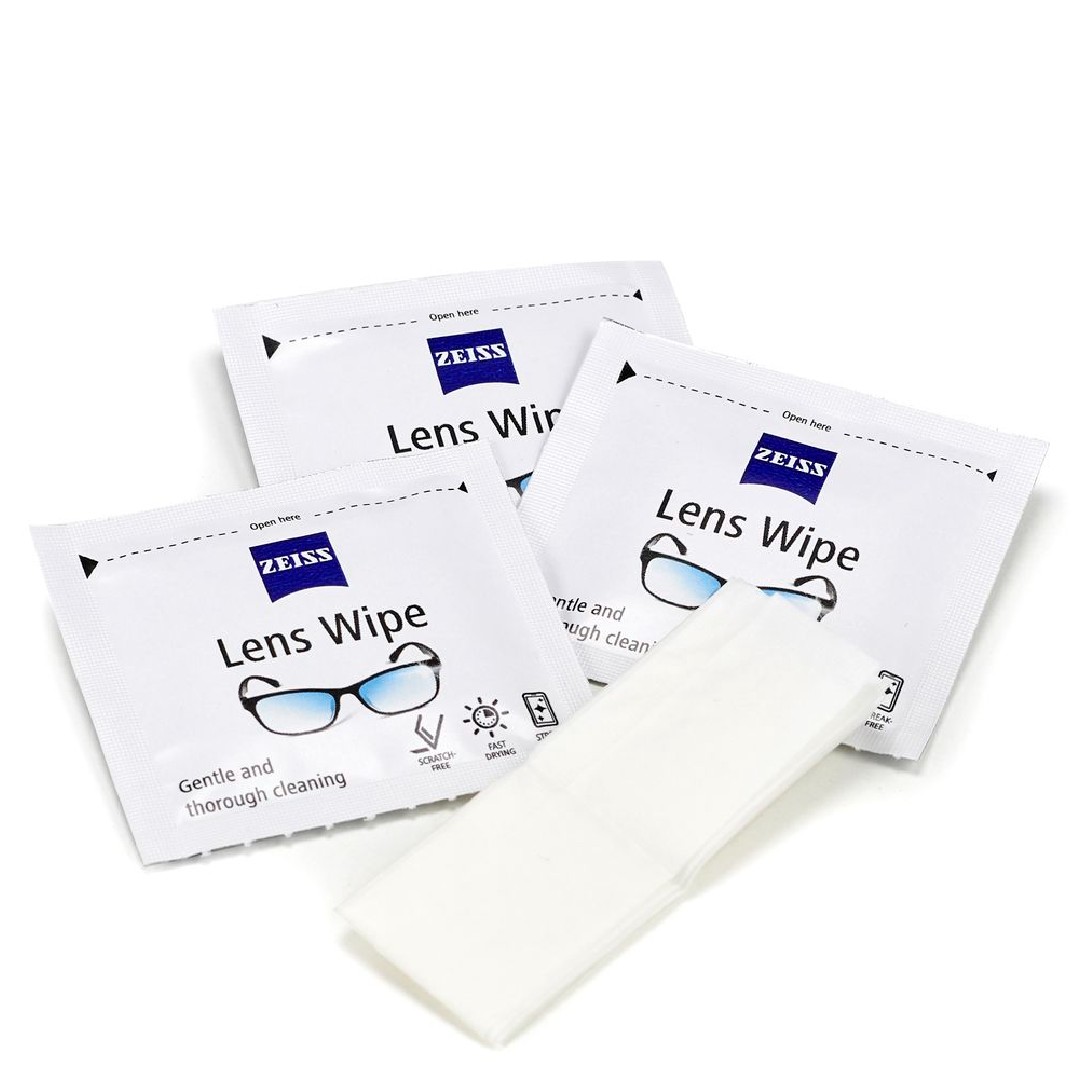
I always find these pre-moistened wipes to be wonderfully convenient. They’re individually packed in sealed sachets, designed for glasses, camera lenses, binoculars and other optics.
Read more below
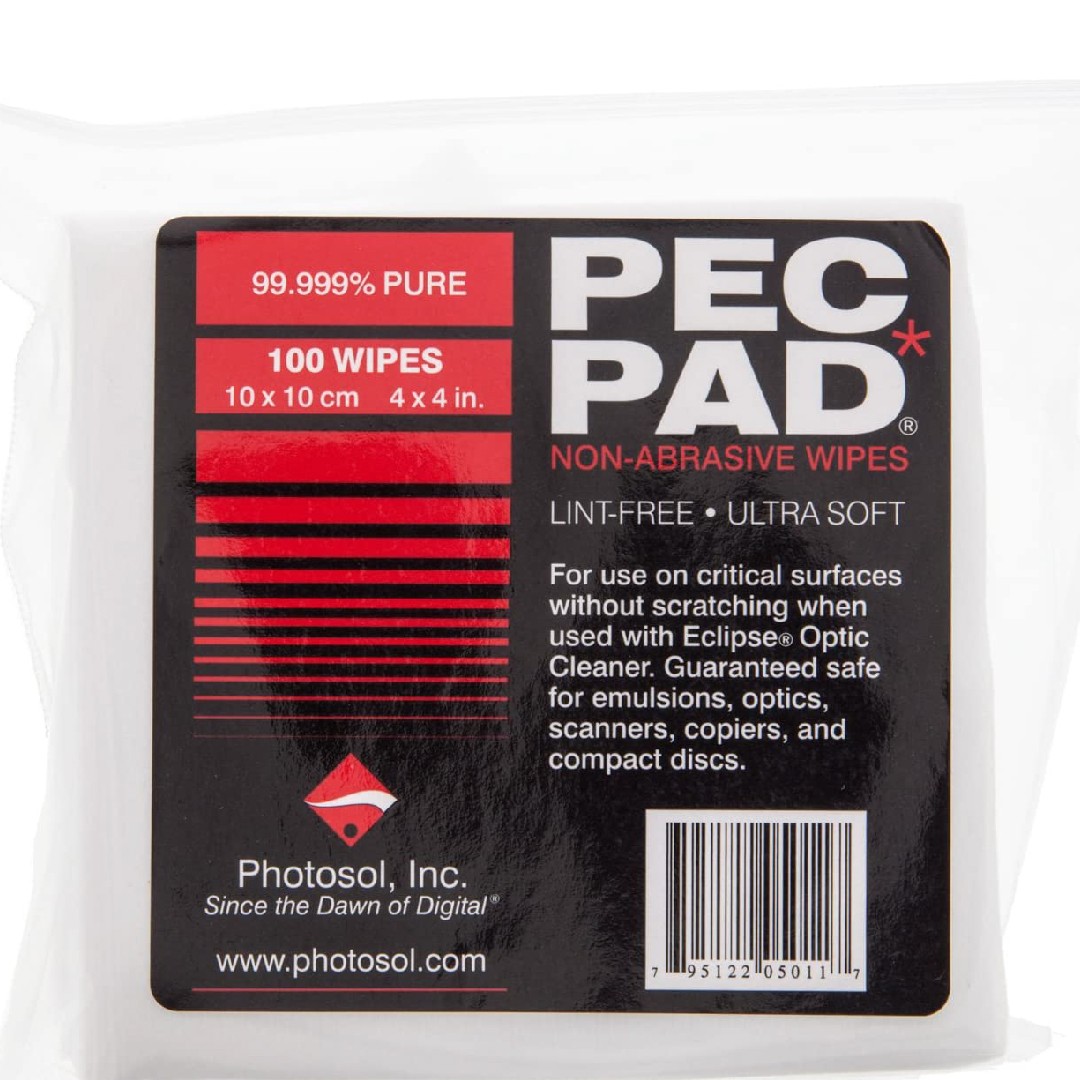
I like that these single-use disposable dry wipes are super-soft yet sufficiently robust so that they don't tear. Use them dry or with an optical lens cleaning solution, sold separately.
Read more below

I’ve seen these ‘lens pens’ being copied by various manufacturers for 20 years or more. This is the original but updated tool, with a self-replenishing tip to tackle even stubborn marks.
Read more below

The iconic design of this air blower always makes me think of the space rocket in the Tintin comics. There’s no funny business in terms of its performance though – it’s a blast.
Read more below
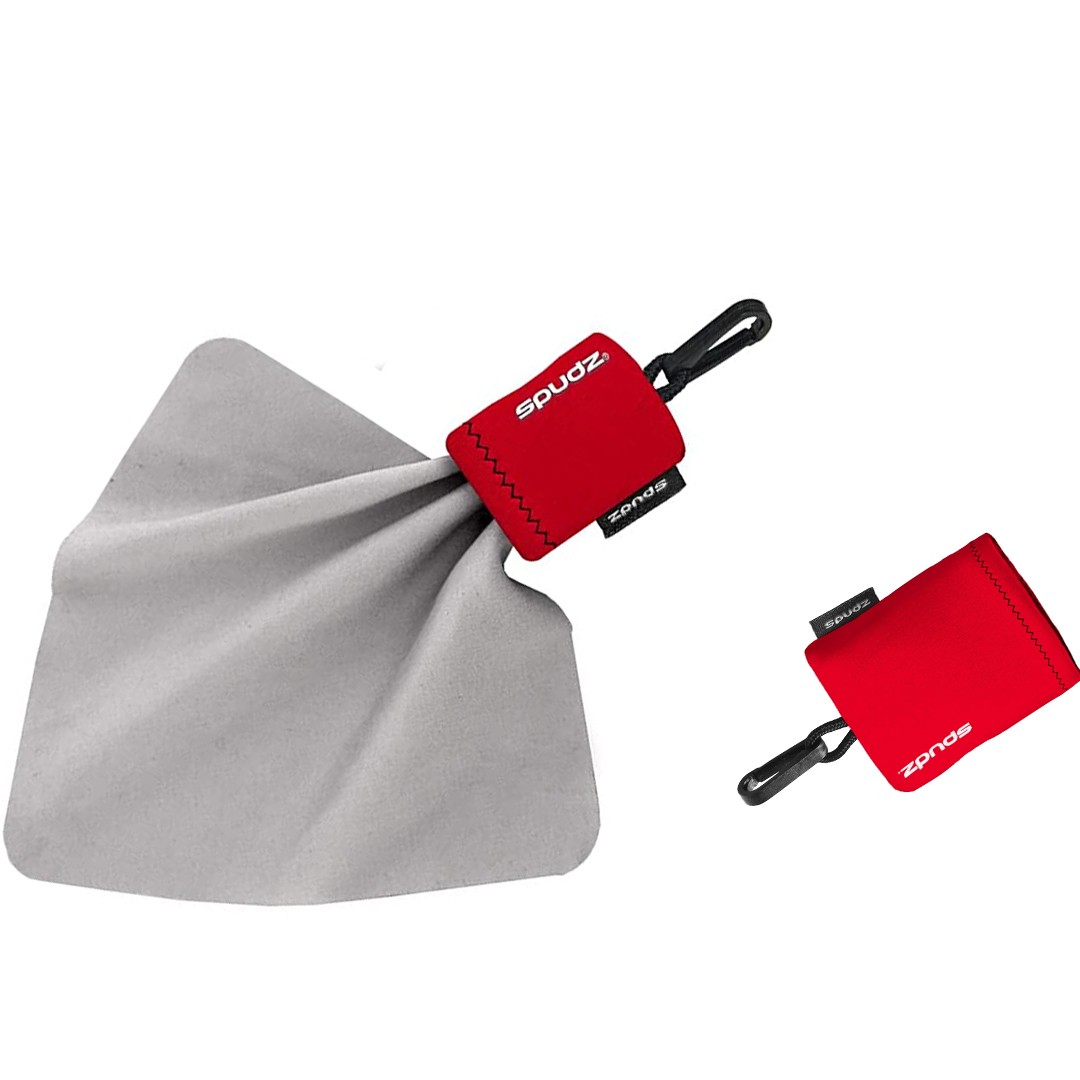
Compact, convenient and effective, this travel-friendly, soft and reusable microfiber cloth stows away inside its own neoprene pouch and can hook onto a loop for secure storage.
Read more below
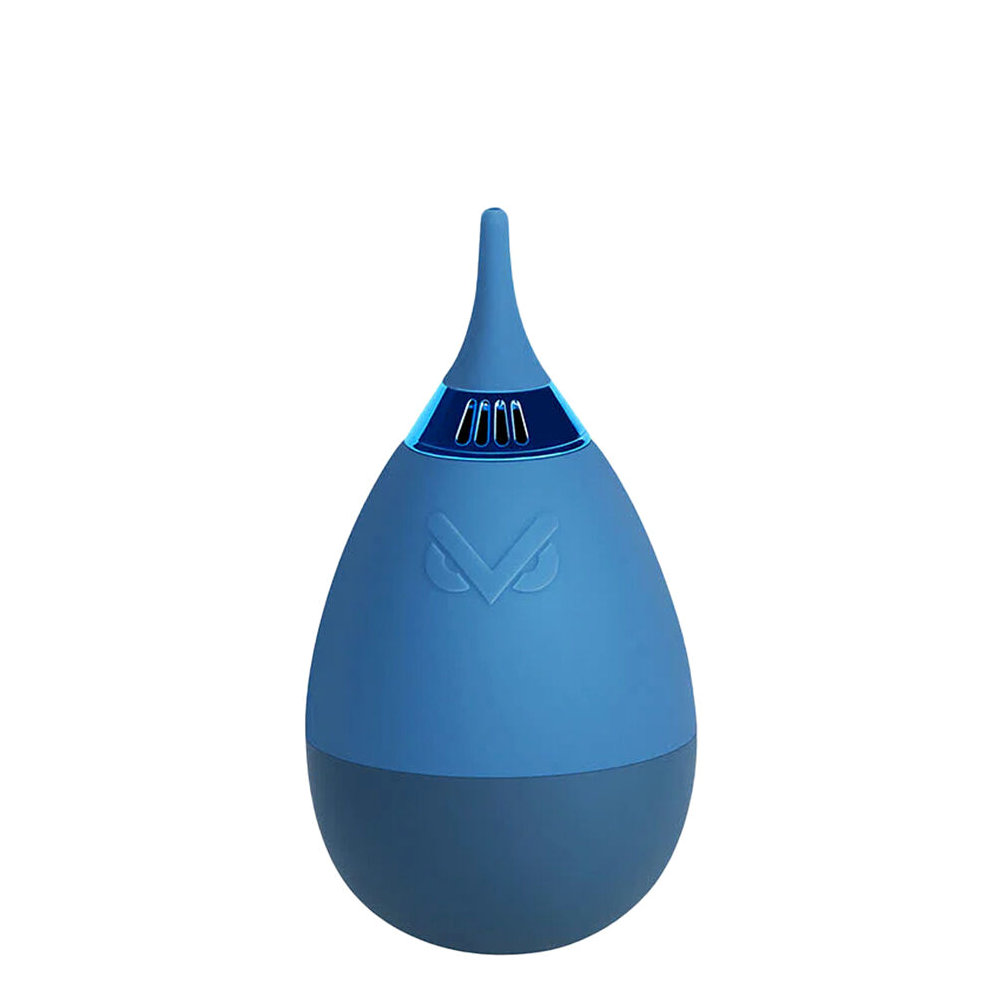
I pop one of these in my camera bag for cleaning on the go. The soft nozzle is an extra safety measure and the blower has its own filtration system to avoid sucking dust back in again.
Read more below
The best lens cleaners
Why you can trust Digital Camera World
The best camera lens cleaning wet wipes
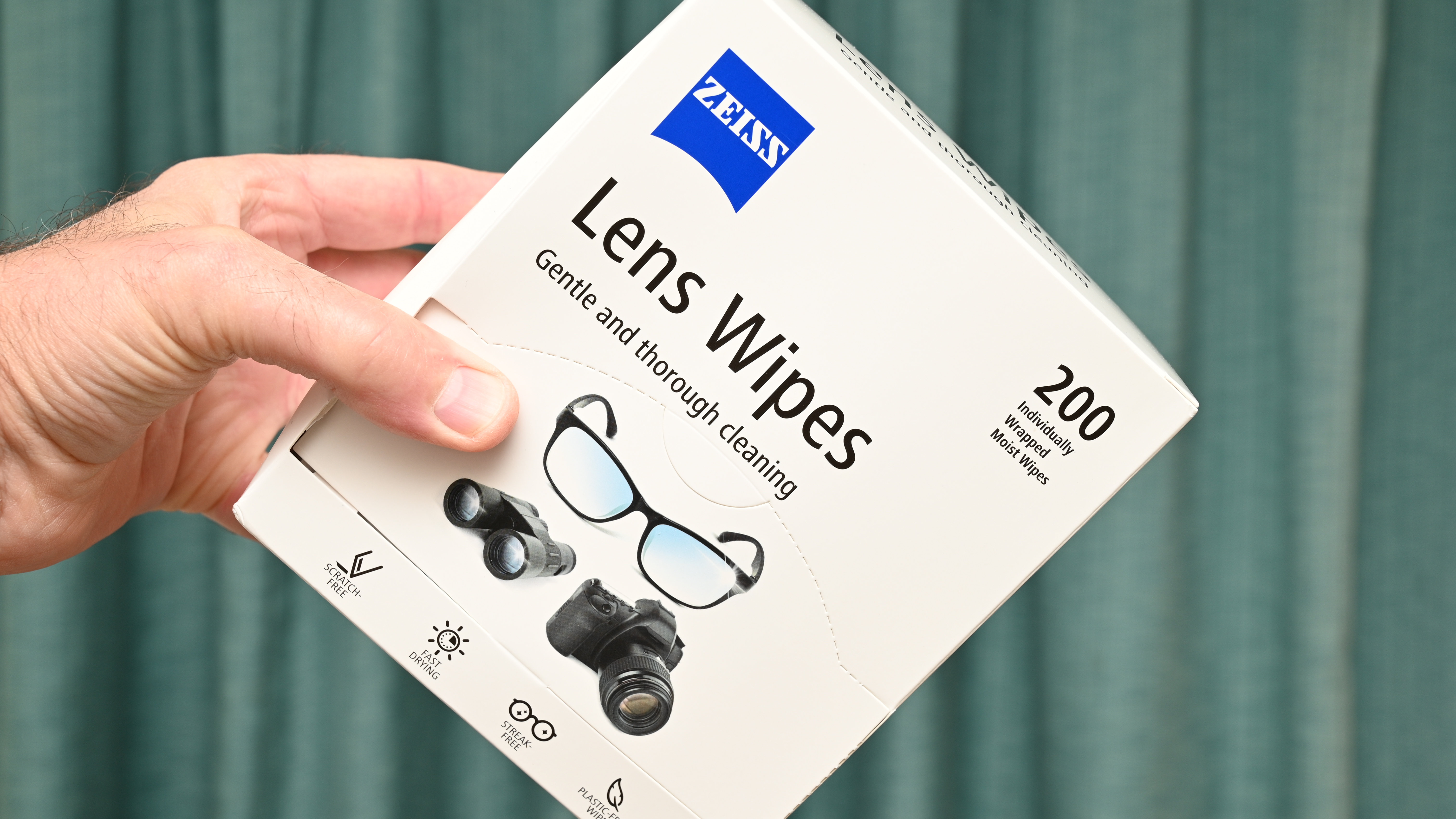
1. Zeiss Lens Wipes
Our expert review:
Specifications
Reasons to buy
Reasons to avoid
Storytime… When I was a young child and my dad taught me how to wash a car (I got free tuition, he got free car-cleaning, everyone’s a winner). Dad gave me some sound advice, “If you drop the sponge on the ground, just throw it away.” Naturally, he didn’t want me scratching his car with any bits of grit or gravel that had got picked up in the sponge. There’s something to be said for applying the same safety logic to lens cleaning wipes. If you use a wipe to clean up any grease and grime from the front of a lens, why would you want to use the same wipe another time around, and risk reapplying the muck back onto the glass? Legendary lens maker, Zeiss, seems to be of the same opinion, and that’s the thinking behind these single-use wipes.
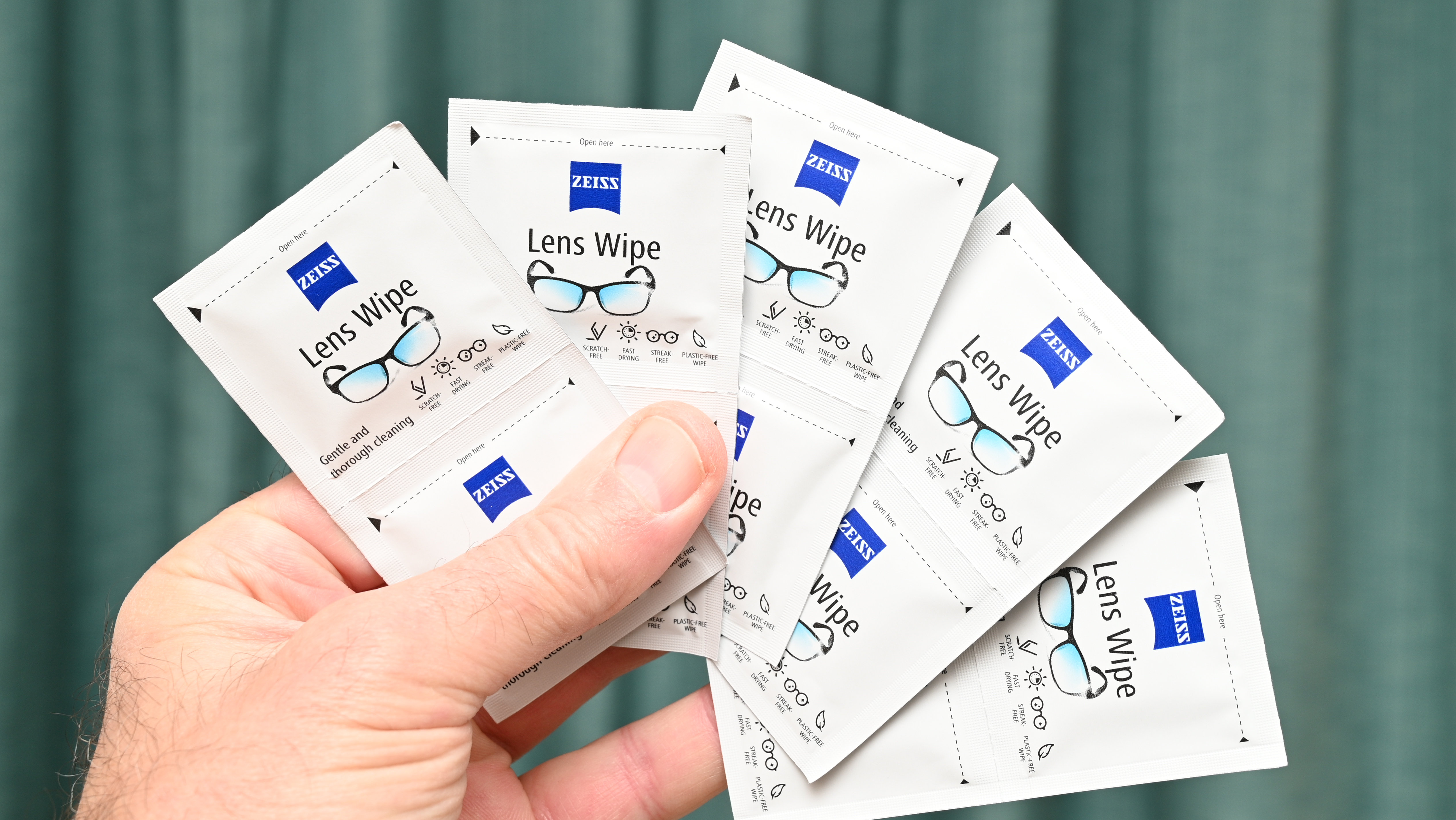
In some world regions the Zeiss wipes are available in packs of 50 or 100 but they’re most commonly sold in packs of 200. Each and every wipe is impregnated with cleaning fluid and sealed inside its own individual sachet. You can therefore be assured that after opening a sachet, the incumbent wipe is pristine and ready for duty. Once unfolded, each wipe measures about 15x13cm or 6x5”, which is a pretty ideal size for cleaning the front element of your camera lens.
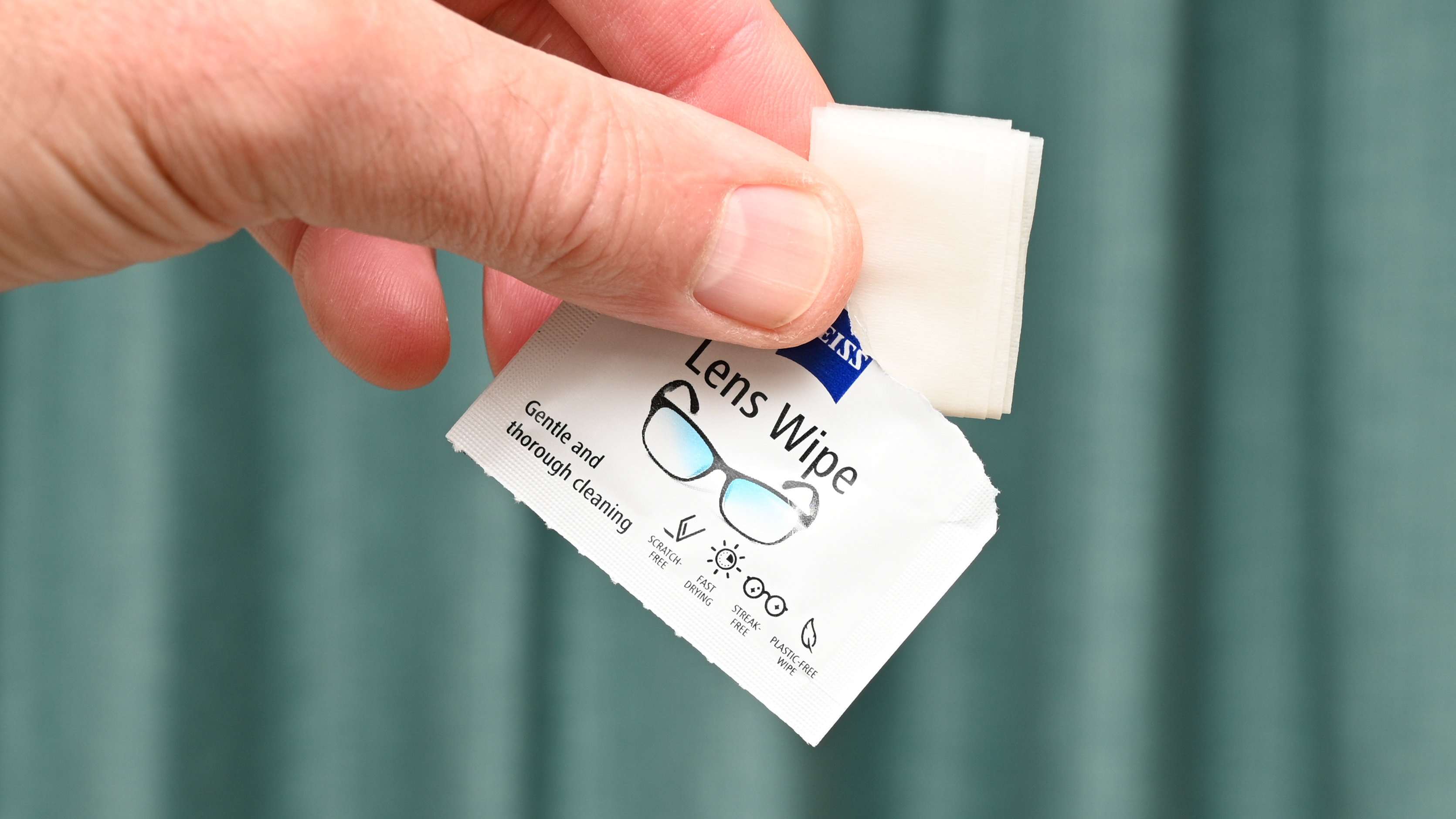
Zeiss says that you should only use the wipe when it’s wet, so presumably the fluid acts as a lubricant as well as a cleaning solution. The solution itself is specially formulated for lenses, and the wide range of applications includes not just camera lenses but is also ideal for binoculars, telescopes, spectacles, reading glasses, sports masks, fashion eyewear, cycling shades, helmet visors, sunglasses, ski goggles and more besides. You can also use them on touchscreens, although Zeiss recommends its anti-bacterial lens wipes for these. I found the wipes to be highly effective on lenses and other glassy surfaces, the solution quickly drying to an immaculately clean and streak-free finish, without the need to wipe off any liquid with a dry cloth.

Features ★★★★★ | Ideal for carrying in a coat pocket or camera bag, the wipes are impregnated with cleaning fluid and housed in individual sachets. |
Design ★★★★☆ | Naturally, you’ll need to first use an air blower if your lens has grit or dirt on it but the design is excellent. |
Performance ★★★★★ | The wipes make short work of cleaning away grease and grime, and glass quickly dries to a streak-free finish. |
Value ★★★★★ | How much do you love your lenses? Each wipe works out to just a few cents, which is very good value in my book. |
Best camera lens cleaning cloths
2. Pec Pad Wipes
Our expert review:
Specifications
Reasons to buy
Reasons to avoid
These dry wipes are designed and manufactured by a company called Photographic Solutions. It’s a name that I’ve trusted for many years, and is behind the Sensor Cleaning Swab Kit that I rated as ‘best value’ in my guide to the best camera image sensor cleaners. The sensor cleaning kit includes swabs and a bottle of Eclipse Optic Cleaning Fluid. That fluid is recommended for use with these wipes, if you need a ‘wet clean’, but sold separately in this case.
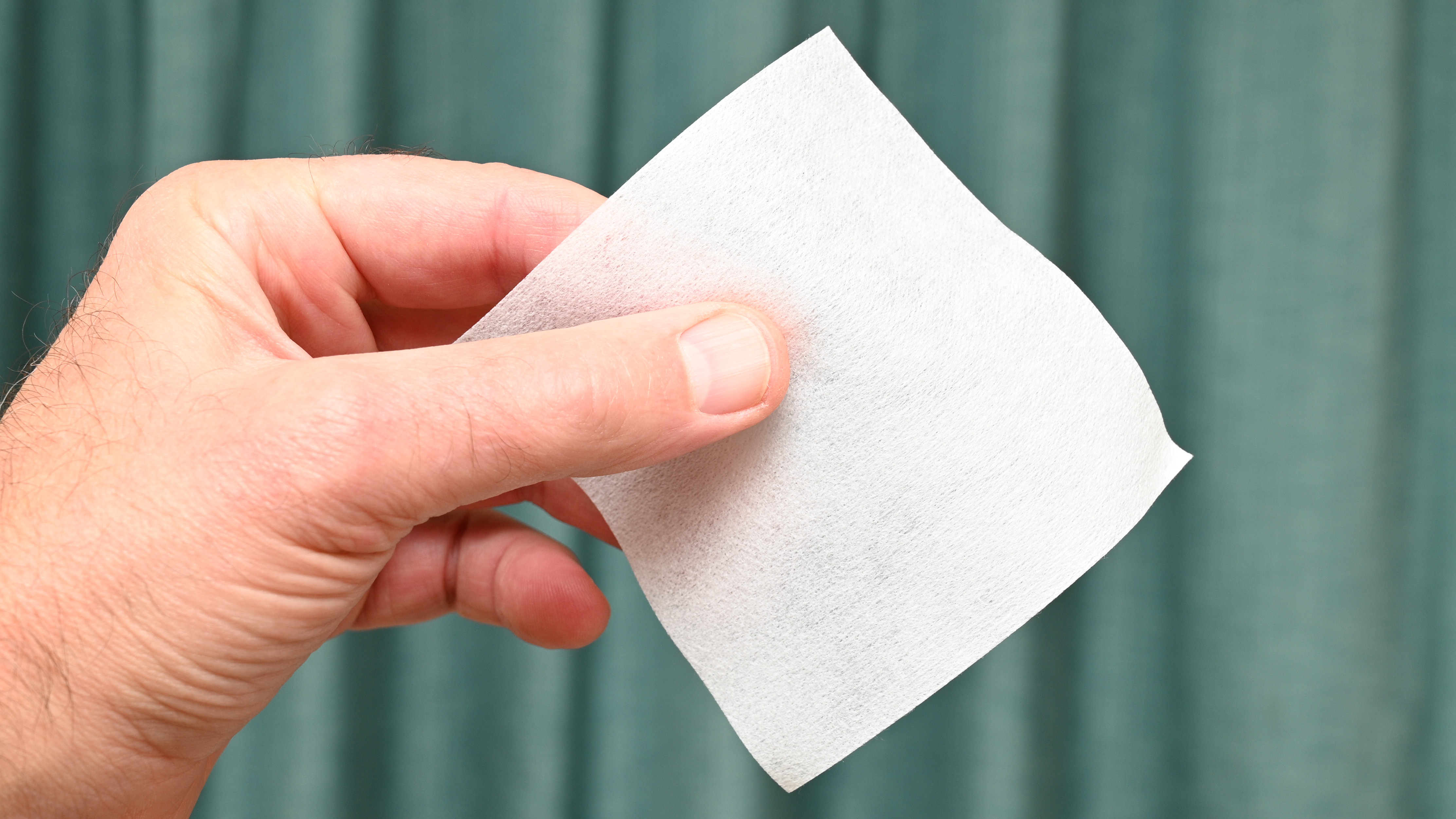
Typically sold in packs of 10, 25 or 100, the dry cloths measure 10x10cm or 4x4” in size, so are ideally suited to lens cleaning. I went for the 100-pack of regular wipes but if you want to go extra-large, there’s a 9x9” version as well. They’re advertised as being 99.999% pure, lint-free and ultra-soft, safe for use on ‘critical surfaces’ without scratching. Those surfaces include coated or uncoated photographic lenses, binoculars, telescopes, picture frames, CDs, plexiglass and other items. Naturally however, if you’re dry-wiping a lens with a cloth, you’ll want to brush or blow away any grit before you use the cloth.
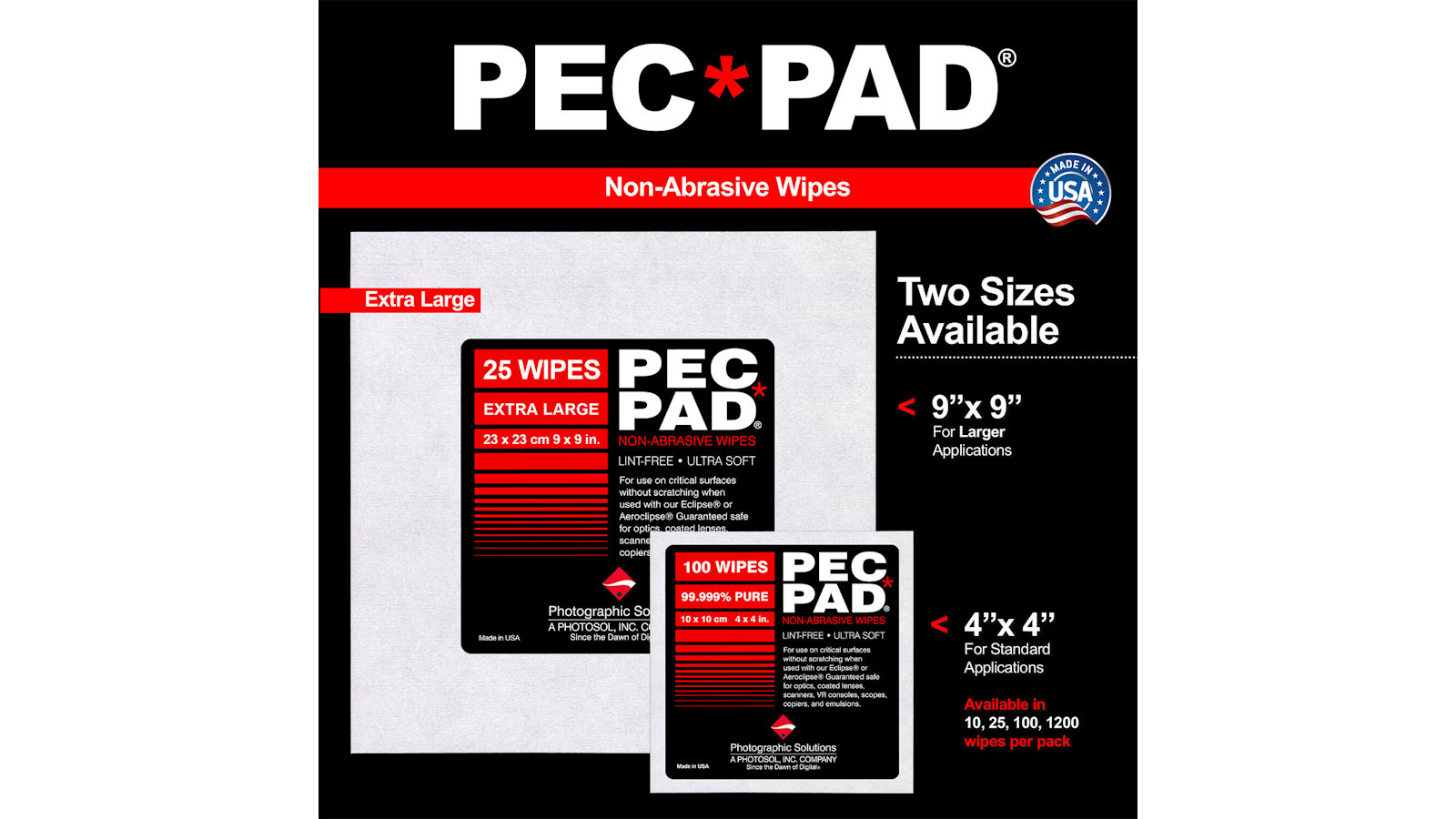
Made in the USA, these cloths and the company behind them are highly respected by photographers all around the world. I’ve found that they work really well with the recommended cleaning solution, and on their own as dry wipes when I just need a light-action clean or to wipe away any condensation. In both cases, they’re super-soft yet robust and very resistant to tearing.

Features ★★★★☆ | They’re basically dry wipes with no additives but they do feature a very high-quality material. |
Design ★★★★☆ | The design is basic but effective. The wipes are ready to use, straight out of the box but are not individually wrapped. |
Performance ★★★★★ | They work supremely well on their own as dry wipes, as well as when using them as wet wipes with cleaning fluid (sold separately). |
Value ★★★★☆ | They’re a bit on the pricey side for dry wipes that aren’t impregnated with cleaning fluid but pretty good value all the same. |
The best camera lens cleaning tool
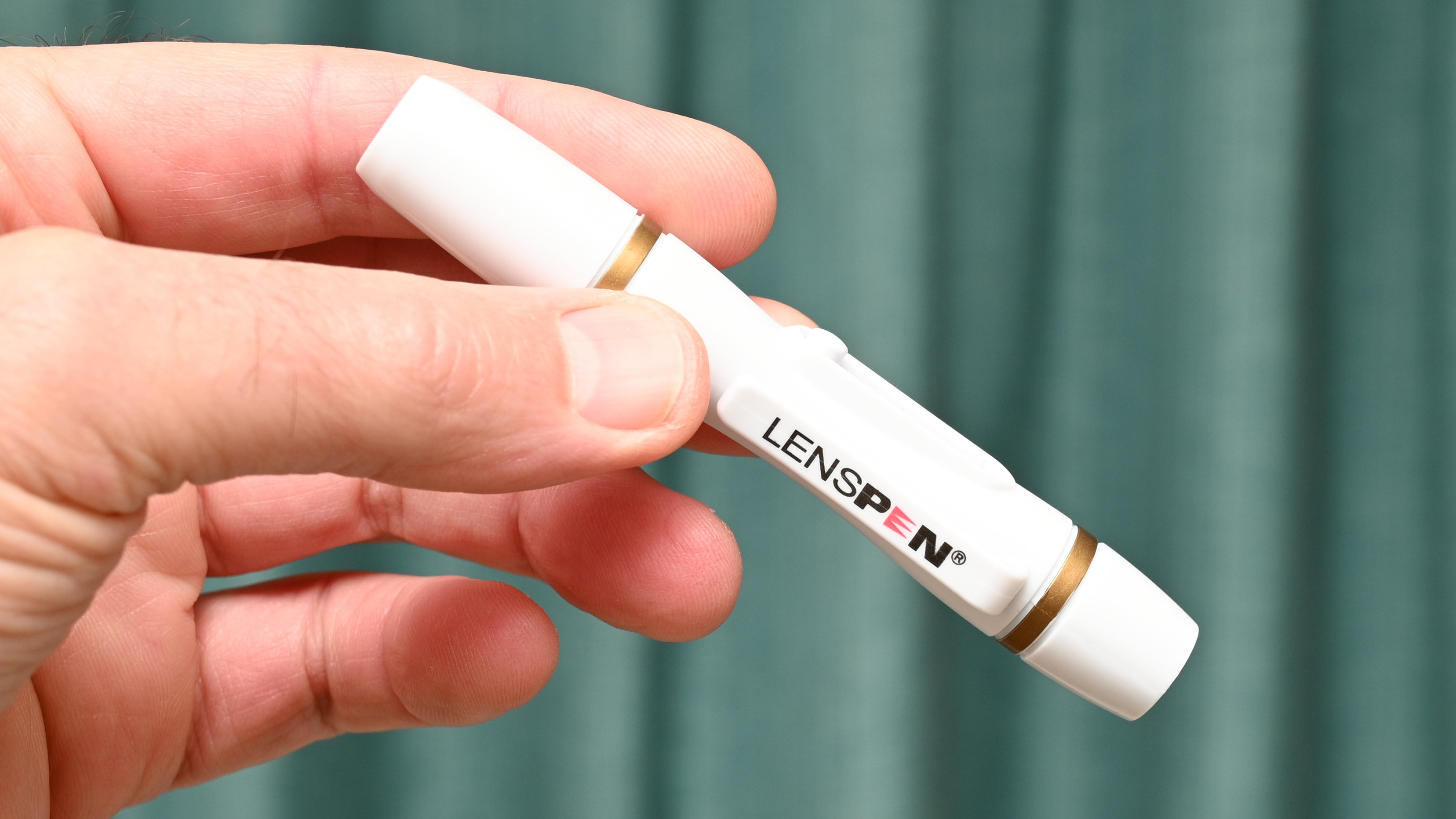
3. LensPen NLP-1
Our expert review:
Specifications
Reasons to buy
Reasons to avoid
I bought one of these LensPen cleaners just after buying my first digital compact camera about 25 years ago. I was intrigued because, while it looks just like a pen (albeit a chunky one) and is just as travel-friendly, it comprises two different cleaning tools. My original LensPen was matte black but glossy white seems to be the preferred color nowadays.
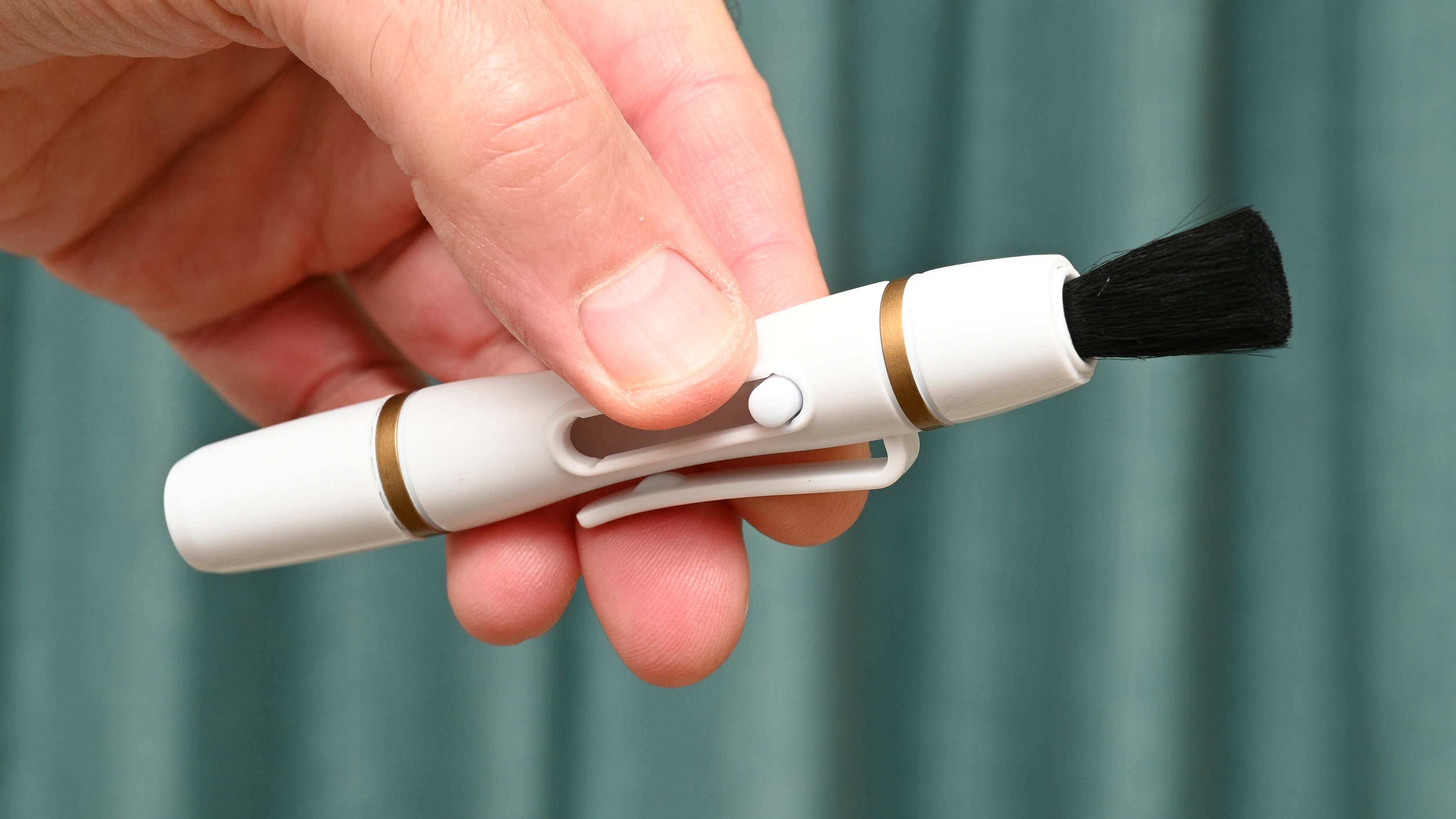
So, pen by name, pen by nature - it even has a pen-like retaining clip so you can pop it in your top pocket (where’s my lab coat?) There’s also a sliding knob which, with a regular pen, you can imagine using to extend the tip. In this case, it extends a super-soft brush from the top, ideal for gently brushing away any loose dirt or grit.
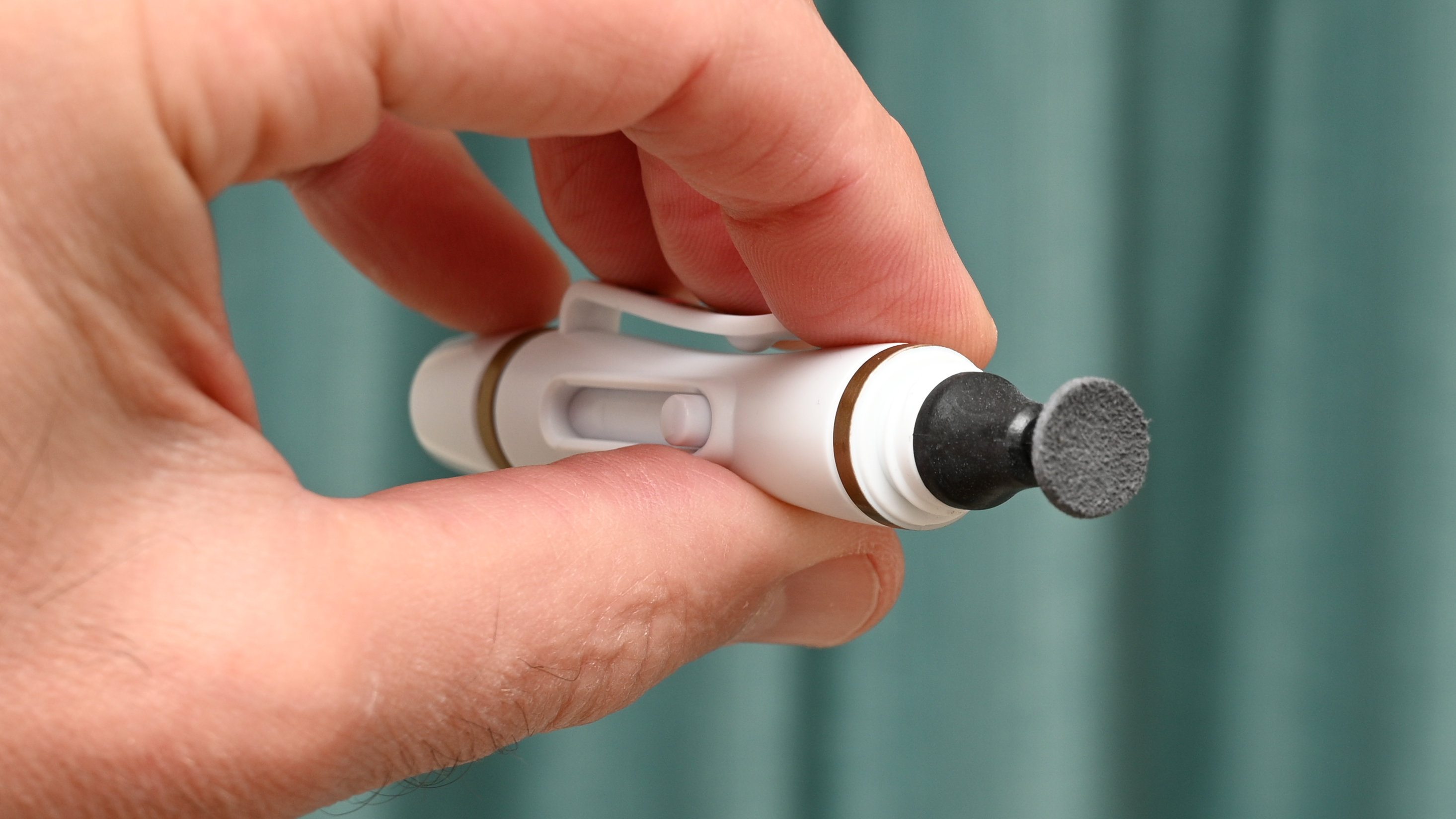
My original LensPen had a push-on cap at the bottom, which you’d twist around to ‘activate’ the cleaning pad at the bottom. The new version has a reformulated ‘invisible carbon cleaning compound’ which is featured in its self-replenishing chamois tip with a screw-on cap. Just be careful you don’t lose the cap when you’ve removed it to use the pen. The cleaning tip (or pad) is advertised as not requiring any messy liquids, and having a long life of more than 500 uses. The circular tip has a diameter of about 12mm or half an inch. It’s therefore small enough to use on binoculars and the like as well as for use on camera lenses with a small-diameter front element. It works well and does a good job of removing even stubborn marks, but the tip can feel a little too small for cleaning lenses with a large diameter.
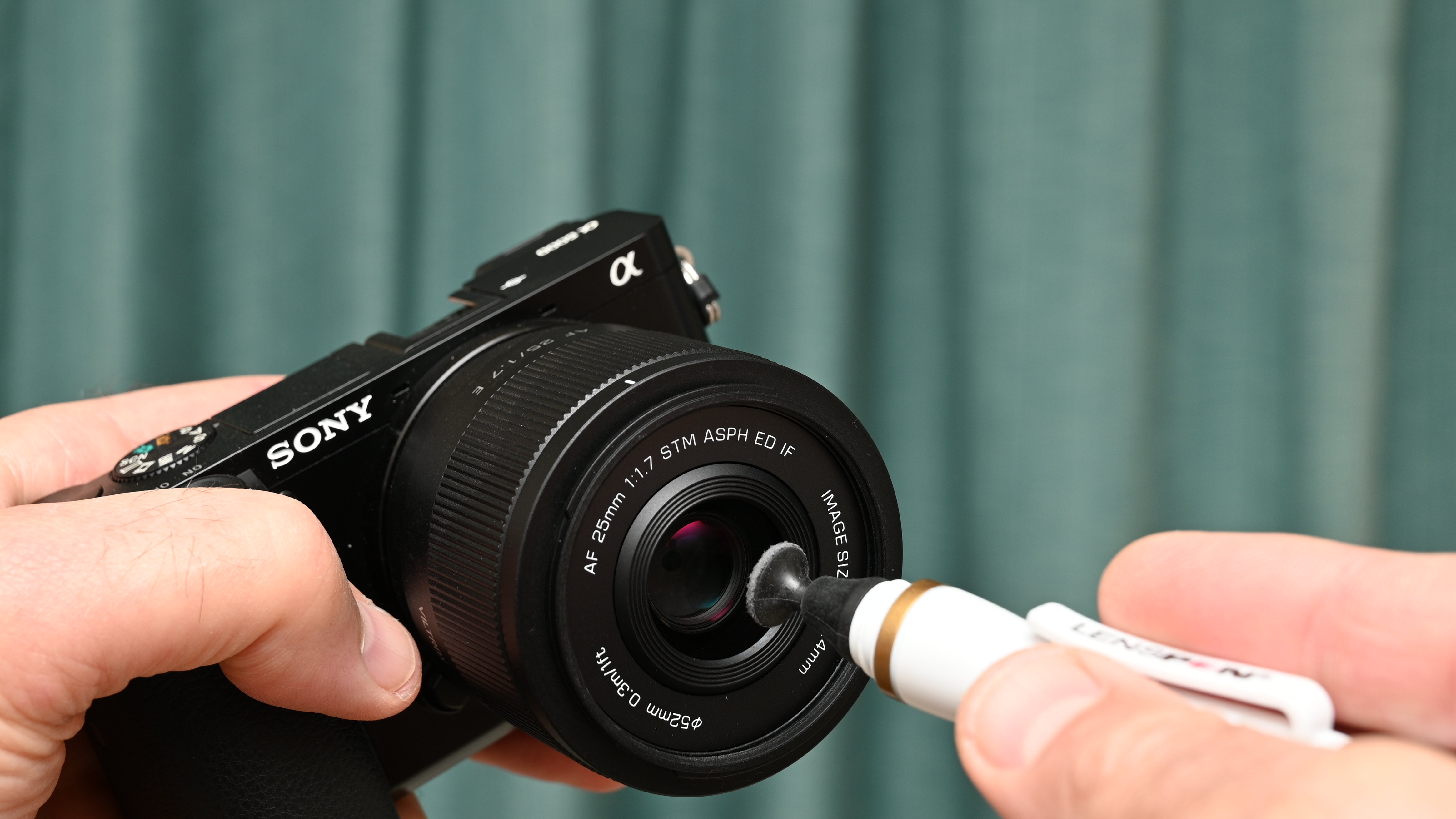
Features ★★★★★ | The dry cleaning compound is a good feature and I like that the tool includes a soft brush as well as a cleaning pad. |
Design ★★★★☆ | The design works well, comprising two different cleaning tools in a compact and lightweight package that’s easy to carry around. |
Performance ★★★★☆ | I find that the LensPen works best on lenses that have a small diameter, as well as on binoculars and telescopes. I feel it’s a little small for use with large lenses. |
Value ★★★★★ | Given that it should be good for cleaning lenses more than 500 times, it’s great value at the price. |
The best camera lens cleaning air blower
4. Giottos Rocket Air Blower
Our expert review:
Specifications
Reasons to buy
Reasons to avoid
The Giottos Rocket Air Blower is available in a variety of different sizes but has a similar shape throughout the range. I’m not the world’s greatest sci-fi fan but I do love its iconic rocket ship design. That’s what first drew me to the medium sized rocket, codename GTAA1900, which I bought about a decade ago. I’ve used it countless times since then, and it still works and looks as good as new.

Not just a case of style over substance, the rocket shape with its four fins enables the blower to stand upright, all on its own. It’s made from silica gel that’s pleasant to the touch, very tough and (as I can vouch for) very long-lasting. It certainly gives a powerful blast of air, which I use not only for clearing dust from my camera lenses and other parts of my camera, but also for air-cleaning all sorts of things with intricate and inaccessible parts.
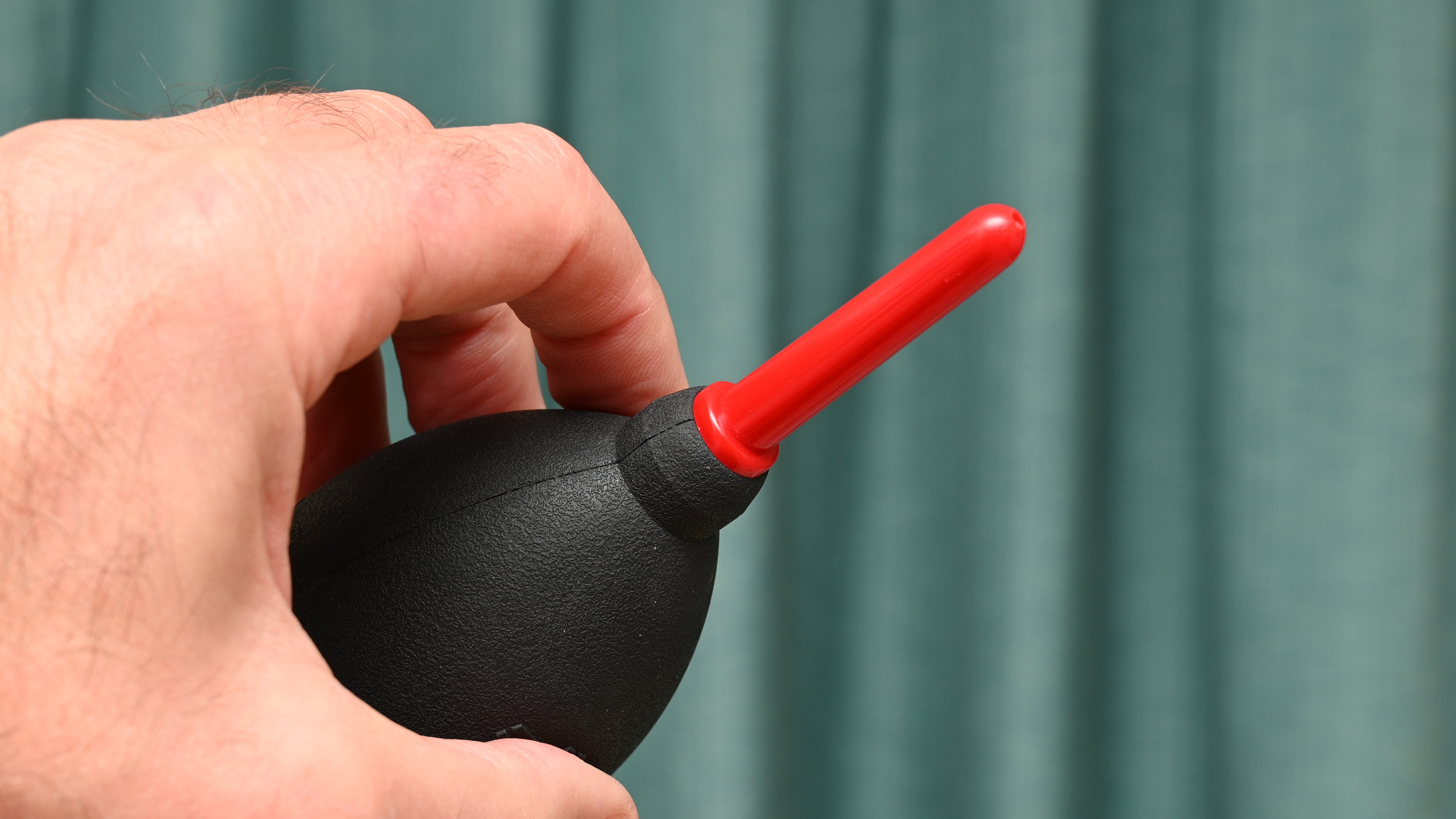
I’ve always been impressed with the performance of the Giottos, which is why I’ve still got it and still use it. It makes cleaning things literally a breeze, and features a valve so that fresh, clean air is sucked in from the back end before being blown out of the nozzle. The nozzle itself is quite long and hard, so you need to exercise a little caution not to poke what you’re cleaning. As an option, you can remove the nozzle completely, although it does also serve the purpose of concentrating the air-stream.

Features ★★★★★ | Useful features include an inlet valve to avoid backflow, a detachable nozzle and even a couple of holes for attaching a strap (not included). |
Design ★★★★★ | The design looks very retro chic with its space rocket shape, but is also very functional and employs premium materials. |
Performance ★★★★★ | More powerful than most air blowers that I’ve tried, the Giottos has great potential for shifting dust that’s reluctant to be budged. |
Value ★★★★★ | I’ve used my Giottos for so long and for so many times that I’m starting to think it might last me a lifetime. That makes it great value at the price. |
The best camera lens cleaner travel cloth
5. Alpine Innovations Spudz Classic
Our expert review:
Specifications
Reasons to buy
Reasons to avoid
Designed and made in the USA, the ‘classic’ Spudz microfiber cloth kit has been around for about 20 years and counting, earning a lot of respect from a faithful fanbase along the way. It’s available in a smaller 15x15cm / 6x6” option but I went for the larger 25x25cm / 10x10” version. I feel that the more generous proportions are a better fit for some of my extra-large lenses with particularly wide-diameter front elements. Naturally, if you only have smaller lenses, the downsized version might be more convenient. Even so, the large edition folds down super-small for convenient storage, which is one of its main attractions.
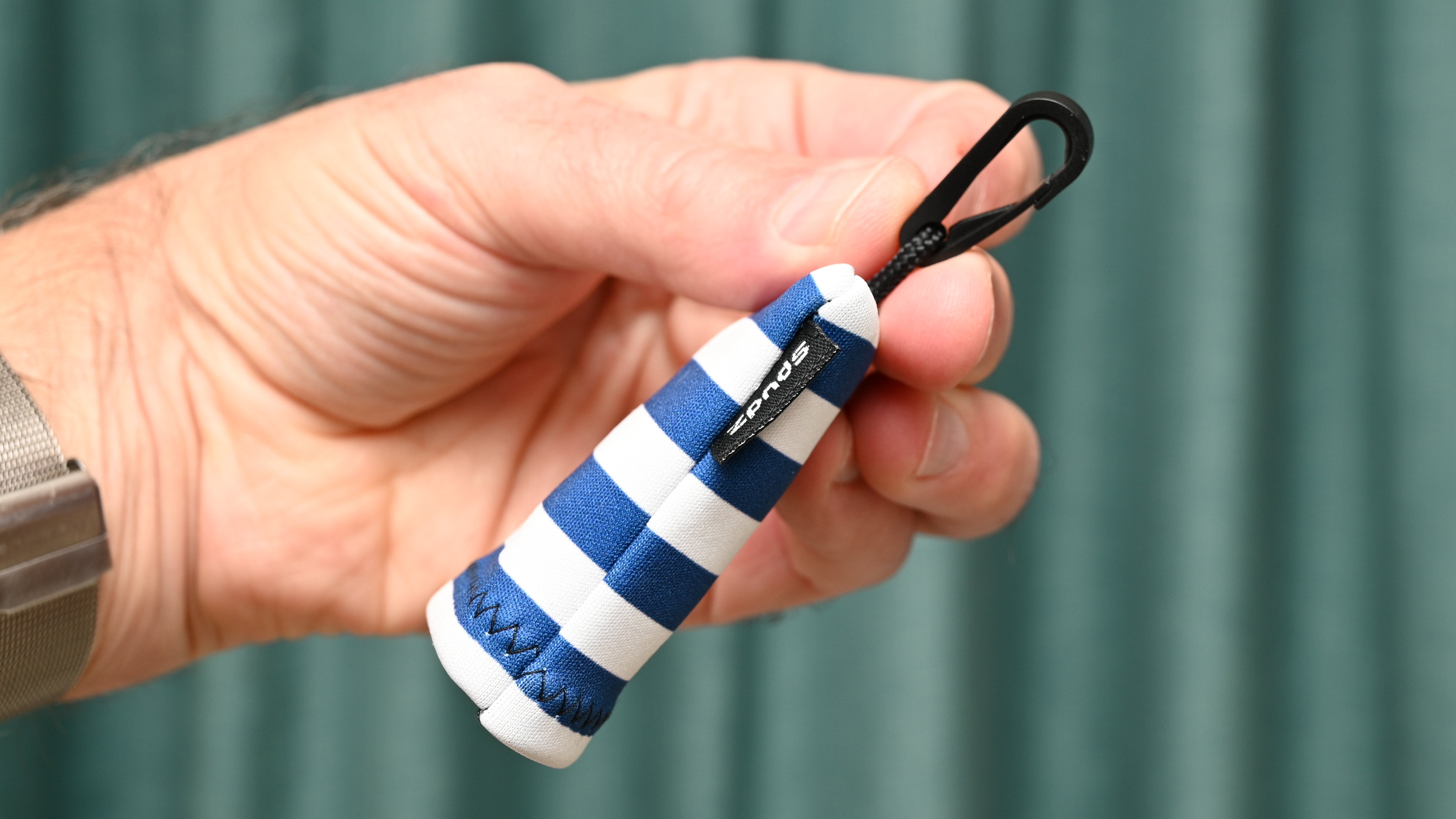
I like using the Spudz as a travel-friendly cleaning cloth. And with travel in mind, I bought the version finished in ‘nautical stripes’, although other designs are readily available to suit different tastes. One thing that remains the same in all of the kits is that the premium-quality soft microfiber lens cloth folds away into its own closable neoprene pouch. The large edition folds into a pouch that measures a mere 7x5x2cm / 2.8x2x0.8”, so it takes up very little space.
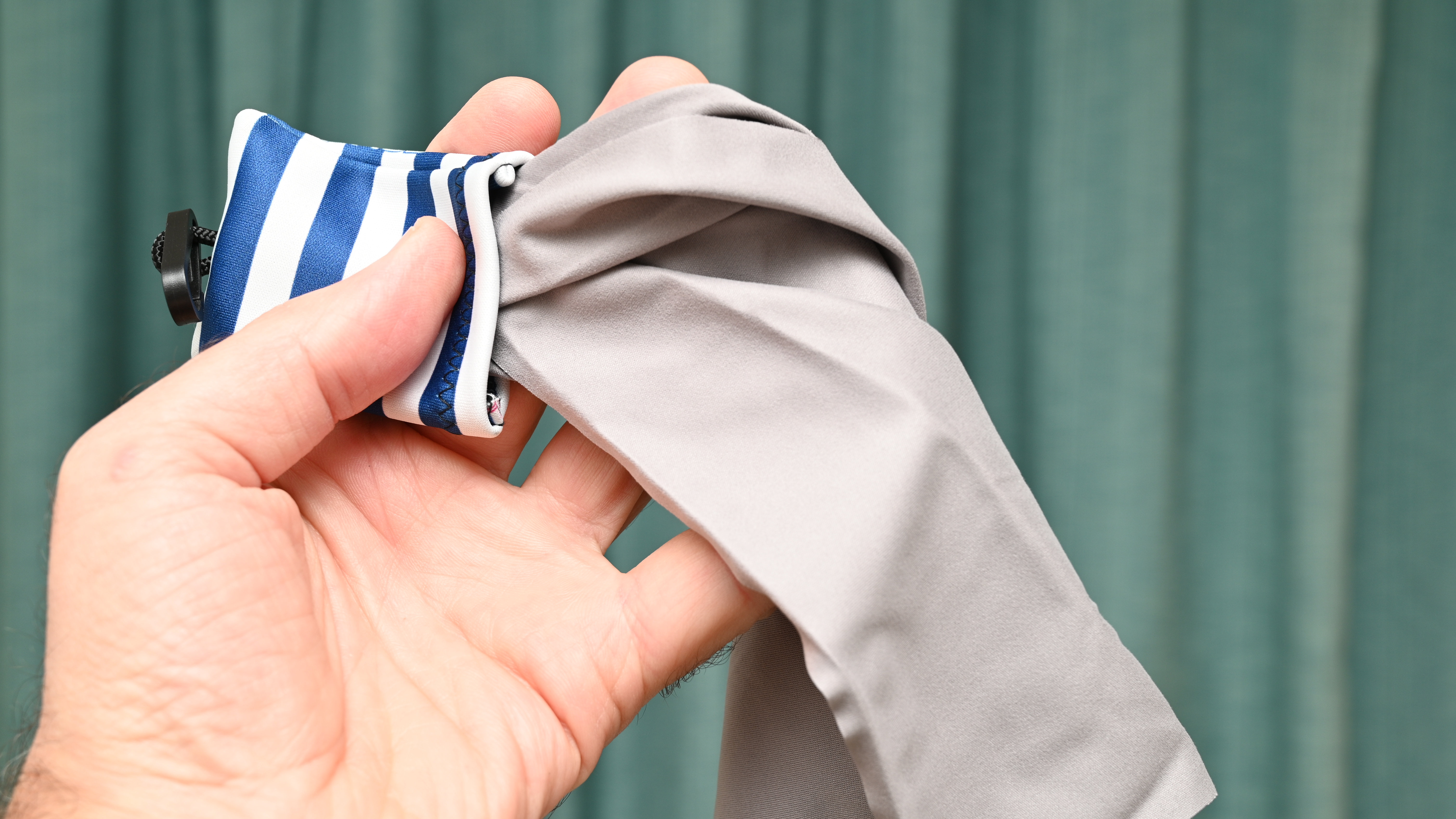
The packable nature of the Spudz design has two advantages as far as I’m concerned. Firstly, it’s neat and tidy for stashing away and actually comes complete with a clip for attaching it to a loop in a bag, on a keyring or pretty much anywhere else. Secondly, the pouch keeps the microfiber cloth itself clean, dry and dust-free, so that it’s as pristine as possible when called upon for cleaning duty. And if and when it does get dirty or contaminated, you can simply chuck it into the your washing machine for a deep clean. As with other microfiber cloths, however, just make sure you use a washing liquid or powder without added fabric conditioner.
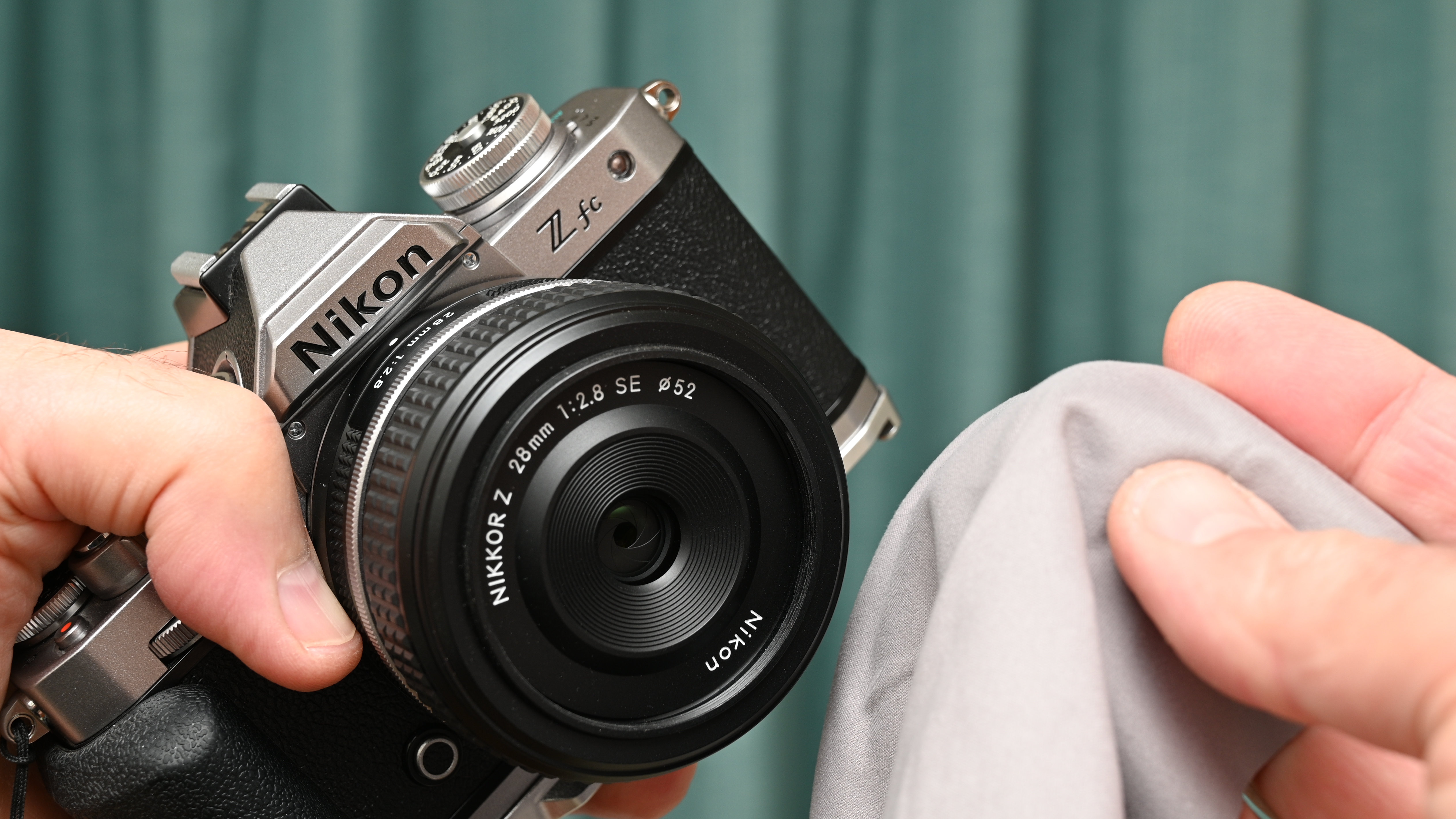
Features ★★★★★ | Useful features include the cloth itself, its attached neoprene carrying bag and a clip for attaching it to a loop or ring. |
Design ★★★★★ | The design works really well, packing a comfortably and usefully large cleaning cloth into a really tight space for stowage. |
Performance ★★★★☆ | It works fine as a premium microfiber cloth but you might first need to use a blower or brush, or add cleaning solution. |
Value ★★★★☆ | It’s good value at the price but if you’re happy to just use a regular microfiber cloth, you can buy cheaper alternatives. |
The best camera lens cleaner travel blower
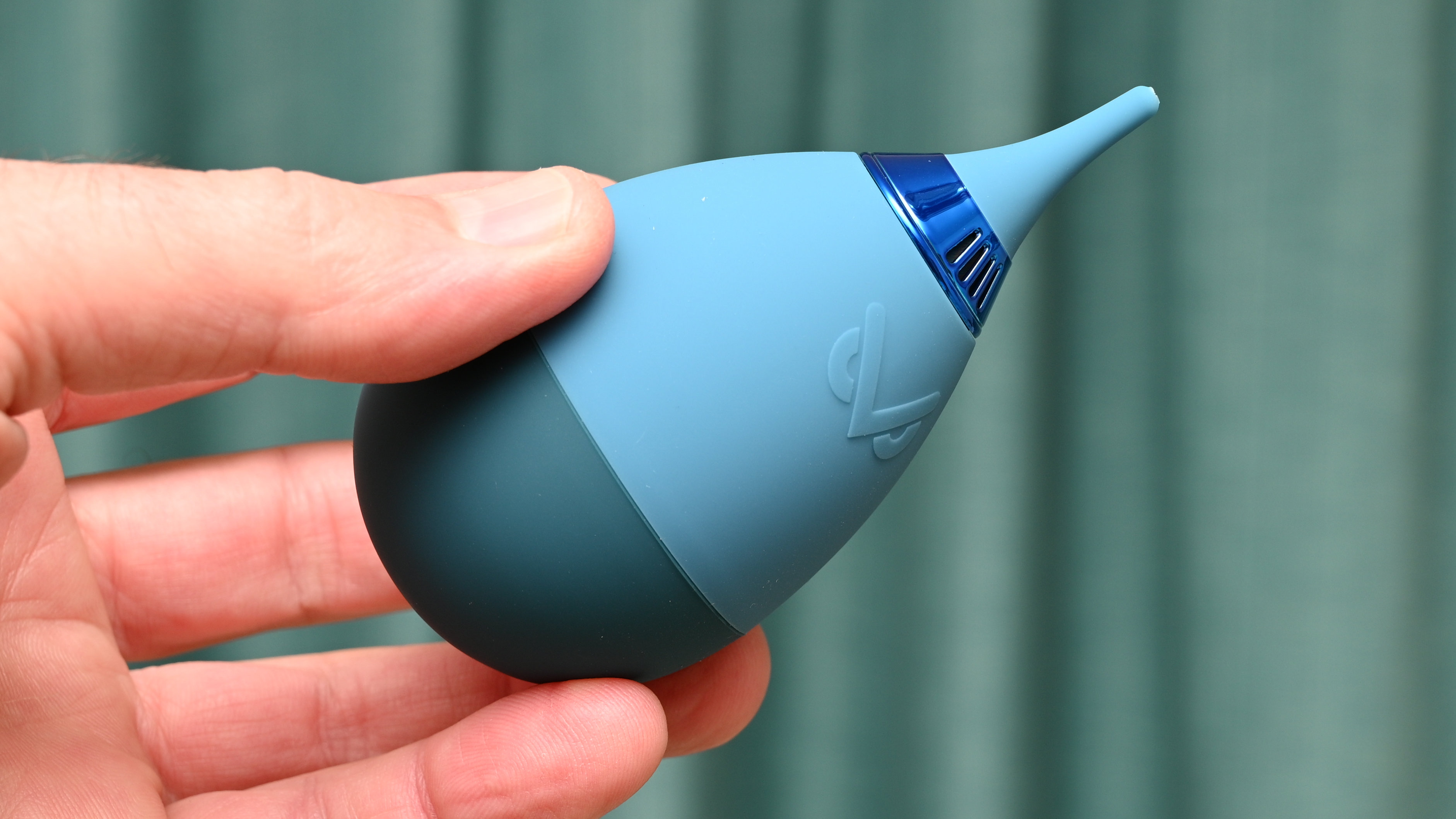
6. VSGO Camera Air Blower
Our expert review:
Specifications
Reasons to buy
Reasons to avoid
If you’ve got this far into my buying guide, you’ll have noticed that I heartily recommend the Giottos Rocket Air Blower. But that’s not the whole story. When I’m travelling around with a fairly small camera bag, I do find the Giottos a bit bulky, especially with its relatively long and hard nozzle attached. I actually prefer this VSGO Camera Air Blower as a travel-friendly option. It’s smaller, has no sticking-out parts and a soft, gentle tip.

Available in a variety of different colors to suit your mood or style, the blower has an eye-catching design that won it a 1019 Red Dot Award. The shape is reminiscent of a teardrop or tumbler and, although it has a round bottom, still stands upright on a desk. That’s thanks to the base section being more weighty than the top. And speaking of the top, the nozzle is made from the same soft, skin-friendly and feelgood silicone material as the rest of the blower. When I’m air-blowing lenses, and more especially sensitive camera image sensors, it’s reassuring to know that the soft rather than hard nozzle is less likely to cause any damage if there’s an accidental collision.
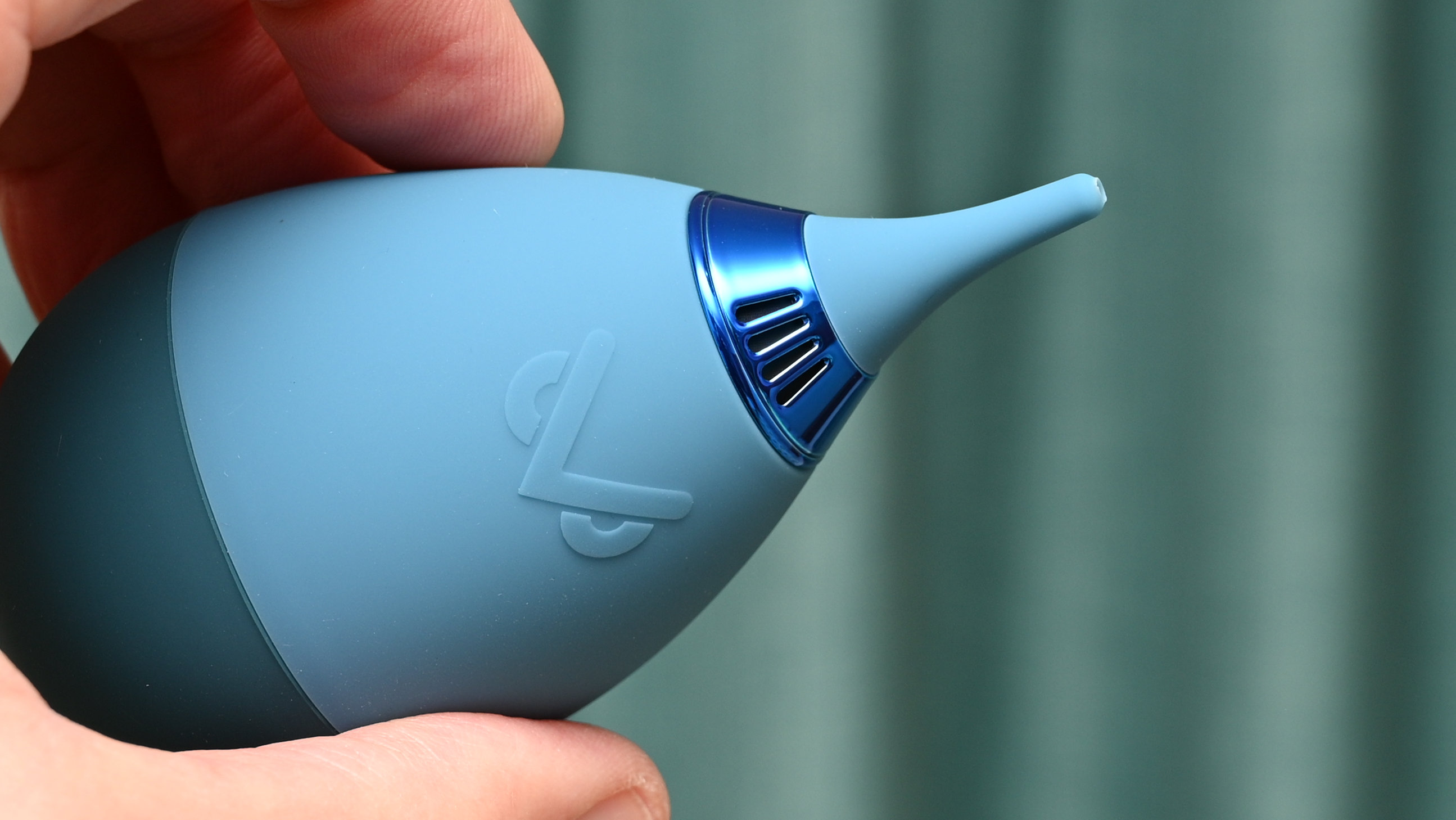
A performance boost in practical terms is that air is one-way traffic through the blower. As such, it has an inlet valve and an output nozzle. Better still, there’s a filter in between to avoid the blower sucking in dust and then firing it out at the lens or whatever else you’re air-dusting. The filter itself is washable but the manufacturer recommends replacing it after a year’s use. The blast of air isn’t quite up to the strength of the Giottos that I also recommend but still gets the job done.

Features ★★★★★ | Smart features include a soft nozzle tip that won’t cause accidental damage, and a built-in air filtration system. |
Design ★★★★★ | The design looks and works great, based on some smart thinking and premium quality materials and construction. |
Performance ★★★★☆ | It doesn’t have as much ‘puff’ as some larger air blowers but does a good job and is generally highly effective. |
Value ★★★★★ | It’s great value at the price, even if you might need to use a cleaning cloth or wipe as well as this blower. |
Best camera lens cleaning spray
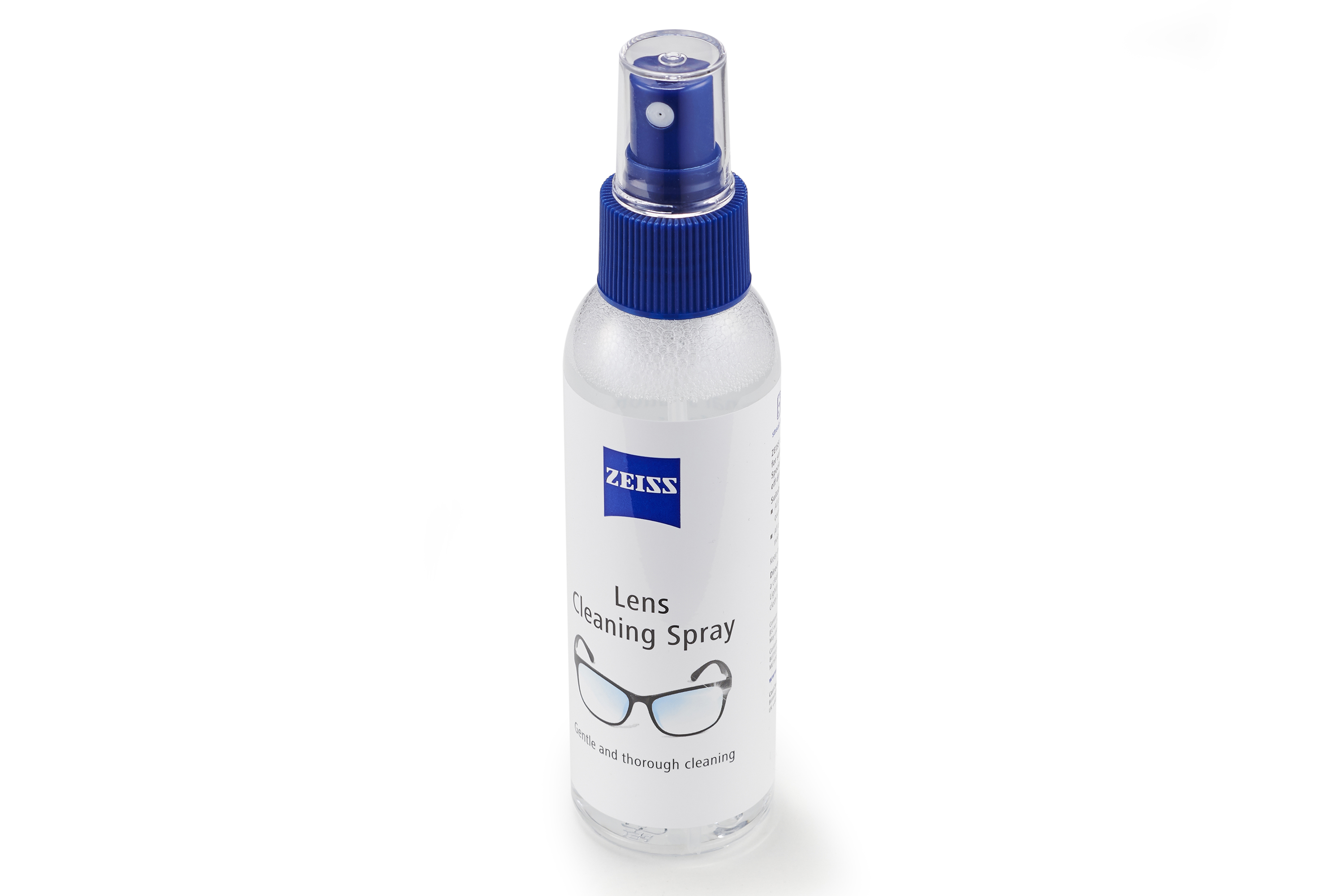
7. Zeiss Lens Cleaning Spray
Specifications
Reasons to buy
Reasons to avoid
When a simple microfiber cloth just isn’t enough to perform a perfect clean, try pairing it with a lens cleaning spray. There are many available, but if you’re going to trust a fluid on your prized optics, you can be fairly sure a spray from Zeiss will be a safe bet. You get two 120ml spray bottles in this pack, though capacity and bundle options may vary according to country and retailer.
Of course, a spray alone isn’t much good, so you’ll need to combine it with a good microfibre cloth. With this combo, it works a treat. One or two squirts onto the cloth is enough to clean a larger diameter front lens element, and the final result is flawless. No streaks, and no residue left from the spray itself. And yes, always spray the fluid onto the cloth, not onto the lens itself.
The only real downside is even at a modest 120ml capacity, each bottle still takes up valuable space in a smaller kit bag, and I'm not overly keen about storing a bottle of liquid next to sensitive electronics.
FAQs
How often should I clean my camera lens?
How often you clean your camera depends on how frequently you use it and under what conditions. As a general rule, it's good practice to clean your camera lens whenever you notice dirt, smudges, or other debris affecting image quality.
How do I clean my camera lens properly?
First, use a lens blower or brush to remove any loose particles from the lens surface. Then, apply a small amount of lens cleaning solution to a lens cleaning tissue or microfiber cloth and gently wipe the lens surface in a circular motion. Avoid applying excessive pressure and be sure to use a clean portion of the cloth for each wipe. Finish by using a lens cleaning pen to remove any remaining smudges or marks.
Can I use household cleaning products to clean my camera lens?
It's not recommended to use household cleaning products, such as glass cleaner or alcohol-based solutions, to clean camera lenses. These products may contain harsh chemicals that can damage lens coatings or other delicate components.
How to choose the best camera lens cleaner
The best lens cleaner for you will depend on what you need it for. Here's a quick breakdown of the main factors to consider.
1. Dry cleaning: Just need to clean some dust or light fingerprints? Try a blower or a microfiber cloth.
2. Wet cleaning: To shift lots of fingerprints, smudges and oily residue, you'll need wet wipes or a liquid spray.
3. Space-saving: Nobody wants to carry unnecessary bulk. Consider wipes or a microfiber cloth for convenient on-the-go cleaning.
4. Safety first: Don’t use any old cleaning fluid on a lens; only products designed for precision coated optics will do.
5. The extra mile: Think about adding a protector or UV filter to a frequently-used lens, to protect the front element from excessive dirt and scratches. Using a lens hood can also give physical protection, as well as reducing the risk of ghosting and flare.

How we test camera lens cleaners
When testing camera lens cleaners, we prioritize effectiveness, safety, and ease of use. We subject cleaners to various lens conditions, including dust, fingerprints, and smudges, to assess their cleaning power without causing damage or leaving residue. We also consider factors like compatibility with lens coatings and materials, ensuring products are suitable for a range of lenses.
The best camera deals, reviews, product advice, and unmissable photography news, direct to your inbox!
Matthew Richards is a photographer and journalist who has spent years using and reviewing all manner of photo gear. He is Digital Camera World's principal lens reviewer – and has tested more primes and zooms than most people have had hot dinners!
His expertise with equipment doesn’t end there, though. He is also an encyclopedia when it comes to all manner of cameras, camera holsters and bags, flashguns, tripods and heads, printers, papers and inks, and just about anything imaging-related.
In an earlier life he was a broadcast engineer at the BBC, as well as a former editor of PC Guide.
